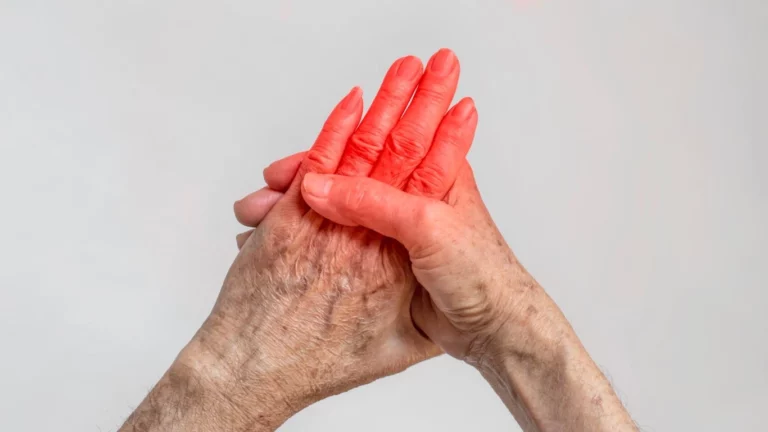How Standing Desks Can Help You Manage Hypertension Effectively
Hypertension, or high blood pressure, is one of the most common and dangerous conditions affecting millions of people worldwide. As a Hypertension expert, I have witnessed firsthand how lifestyle changes can have a profound impact on managing this condition. One such change that has gained attention in recent years is the use of standing desks. Many people with hypertension often struggle with sedentary habits, but incorporating standing desks into daily routines can offer significant health benefits. In this article, I’ll explore how standing desks help with hypertension, drawing on both research and my personal experience as a specialist in the field.
Why Sitting for Long Periods Contributes to Hypertension
We all know that sitting for long periods is not great for our health. But what many people don’t realize is how detrimental this habit can be for those dealing with hypertension. When you spend hours sitting at a desk, particularly in an office setting, it can lead to a host of issues. One of the most significant concerns is the impact on your blood pressure. Prolonged sitting can contribute to poor circulation and weight gain, both of which are risk factors for developing or worsening high blood pressure.
As someone who regularly works with individuals struggling to manage their hypertension, I can tell you that lifestyle changes—like reducing sitting time—are key. The more time you spend sitting, the higher your risk of developing heart disease and other complications related to hypertension. Incorporating a standing desk into your workspace can encourage you to move more and break up long stretches of sedentary time. This simple change can have a profound effect on your health.

How Standing Desks Improve Circulation and Help Lower Blood Pressure
Standing desks work by encouraging you to stand rather than sit for long periods of time. This seemingly small change can have a big impact on your blood pressure. When you stand, your body is more active, and this helps with circulation. Blood is able to flow more freely, which helps reduce the pressure on your arteries, a major contributor to hypertension.
In my years of practice, I’ve seen firsthand how patients who incorporate standing desks into their daily routines often report a reduction in their blood pressure. Standing promotes better posture, which in turn can alleviate pressure on vital organs and improve overall circulation. Furthermore, standing activates muscles that are usually dormant while sitting, which can also have a positive effect on heart health.
Beyond just improving circulation, standing desks also encourage movement. You’re more likely to stretch, walk, or do simple exercises when you’re standing. In fact, breaking up sitting time with short bursts of physical activity is one of the best ways to lower your blood pressure. The more you move, the better your heart functions, and standing desks can make this easier to incorporate into your workday.
The Importance of Posture for Blood Pressure Management
One often-overlooked factor in managing hypertension is posture. Poor posture—like slouching while sitting—can cause tension and stress in the body, which, over time, can elevate blood pressure. When you stand, you’re more likely to adopt a natural, neutral posture that doesn’t strain your muscles or nerves. This is important because reducing physical stress can help keep your blood pressure in check.
From my experience, I’ve seen patients improve their blood pressure just by becoming more mindful of their posture. Standing encourages a more upright position, which reduces the likelihood of back pain and promotes proper alignment. This, in turn, can help lower stress levels, a key factor in managing hypertension. So, if you’re someone who has struggled with poor posture while sitting, a standing desk could be the perfect solution to not only improve your health but also help you maintain better posture throughout the day.

What the Research Says About Standing Desks and Hypertension
It’s not just anecdotal evidence that supports the benefits of standing desks for hypertension management—there’s plenty of research backing it up. Studies have shown that reducing sedentary behavior by standing more throughout the day can lead to significant improvements in both blood pressure and overall cardiovascular health.
For example, a study published in the journal “Hypertension” found that participants who used standing desks had lower blood pressure readings compared to those who remained seated for extended periods. Another study indicated that standing for just a few hours a day could lower systolic blood pressure by as much as 10 points, which could be the difference between a diagnosis of high blood pressure and normal blood pressure.
What’s more, researchers have also found that standing more often can help reduce the risk of developing other chronic conditions, such as diabetes and obesity—both of which are closely linked to hypertension. It’s clear that standing desks aren’t just a trend—they’re a powerful tool in the fight against hypertension.
Incorporating a Standing Desk Into Your Routine
Now that you know how standing desks can help with hypertension, you may be wondering how to get started. The good news is, incorporating a standing desk into your routine is easier than you might think. There are a variety of options available, from adjustable standing desks to desk converters that allow you to switch between sitting and standing. In my practice, I’ve found that the key to success is starting slow and gradually building up to longer periods of standing each day.
Start by standing for 15–30 minutes at a time, and then gradually increase the duration as you feel comfortable. Don’t forget to mix in movement—take short walks, stretch, and make sure you’re not standing in one position for too long. Aim for a balance of sitting, standing, and moving throughout your day.
Another helpful tip is to pay attention to your posture while standing. Make sure your workstation is set up ergonomically to prevent strain on your back, neck, and wrists. A standing desk should encourage good posture, not worsen it. Ensure your screen is at eye level, your feet are flat on the floor, and your arms are at a comfortable angle when typing.

Standing Desks and Their Impact on Mental Health
It’s easy to focus only on the physical benefits of standing desks when thinking about managing hypertension, but don’t overlook the mental health benefits. In my years of working with patients who struggle with high blood pressure, I’ve learned that stress plays a huge role in exacerbating hypertension. Standing desks can be an effective way to reduce stress levels and improve your mental well-being—two things that have a direct impact on blood pressure.
When you’re sitting for long periods, it can feel like time drags on, and the longer you stay in one position, the more restless you might become. This discomfort can contribute to feelings of stress, frustration, and even anxiety. I’ve seen it in my practice: patients who are stuck in a seated position for hours often experience tension, which can increase cortisol levels and, ultimately, elevate blood pressure. In contrast, standing desks provide a dynamic change to your environment. Simply standing up helps break the monotony, boosts energy levels, and has been shown to reduce overall stress.
Standing encourages movement, and moving—even just shifting positions—can help relieve built-up tension. It’s not uncommon for patients who use standing desks to report feeling less stressed and more focused throughout the day. It’s these small, positive mental shifts that contribute to a more balanced lifestyle and, ultimately, better control over hypertension.

The Link Between Activity and Lower Blood Pressure
We can’t talk about standing desks without addressing one of the most important aspects of lowering blood pressure: physical activity. Let’s face it—many of us spend too much time sitting. In my experience, the sedentary lifestyle is one of the biggest culprits when it comes to hypertension. The good news? Standing desks can help you incorporate more movement into your day, which is one of the best ways to reduce blood pressure.
Studies have shown that even light physical activity, such as standing or walking around, can have a significant impact on blood pressure. You don’t need to do a full workout to see benefits. The key is to move more frequently throughout the day. Standing desks encourage you to do just that. As you stand, you’re more likely to shift your weight, walk around a bit, and even engage in other low-impact activities like stretching.
In my experience with patients, those who stand more often throughout the day tend to have better control over their blood pressure compared to those who remain seated for hours on end. The increase in movement promotes better circulation, which is essential for heart health. Even if you’re just standing for 30 minutes at a time and taking small steps, it can have a lasting impact on your overall blood pressure readings. If you can gradually build up to standing for longer periods or incorporating more movement into your routine, your heart will thank you.
Practical Tips for Maximizing the Benefits of Standing Desks
Okay, now that you understand why standing desks can help with hypertension, let’s talk about some practical tips for getting the most out of them. It’s not just about standing up—it’s about creating a workspace and routine that supports your health in the long term. From my own experience and the stories of countless patients, I’ve found that a few simple adjustments can make a world of difference.
Start Slow and Build Gradually
If you’ve been sitting for most of the day for years, jumping straight into a full-time standing routine may be overwhelming. Trust me, I’ve seen many patients give up too soon because they expected too much too quickly. Start by standing for just 15 to 30 minutes every hour. This allows your body to adjust gradually to the change, and it will be much easier to stick with it in the long run.
From there, you can increase the amount of time you stand. The goal is to find a balance between sitting and standing that works for you. The more consistent you are, the more you’ll begin to see benefits in your blood pressure and overall health.
Incorporate Movement and Stretching
Standing for long periods without moving isn’t ideal either. It’s important to mix in movement to prevent your muscles from getting stiff. A good rule of thumb is to alternate between standing and sitting throughout the day. When you’re standing, try to take short breaks to walk around, stretch, or do some simple exercises.
I recommend setting a timer or using a fitness app to remind you to move. Even something as simple as walking around your office or doing a few stretches can help keep your circulation flowing and your muscles engaged. If you can, try to add some light exercise into your day—whether it’s a quick walk after lunch or a few minutes of stretching in the morning. The more you move, the better your blood pressure will respond.

The Long-Term Health Benefits of Using a Standing Desk
Using a standing desk isn’t a quick fix—it’s a long-term commitment to better health. But trust me, the benefits are worth it. When you combine the advantages of standing more often with other lifestyle changes—such as eating a balanced diet, managing stress, and exercising regularly—you’re setting yourself up for success in managing hypertension.
In my practice, I’ve worked with patients who have made incredible strides in lowering their blood pressure simply by adopting healthier habits like standing more frequently. But it’s important to remember that it’s not about perfection. It’s about creating a routine that supports your health in small, sustainable ways. Standing desks are just one piece of the puzzle, but they can make a huge difference over time.
Moreover, standing more often can reduce your risk of developing other conditions related to hypertension, such as diabetes, heart disease, and obesity. When you focus on improving your overall health, you’ll not only lower your blood pressure but also improve your quality of life.

Are Standing Desks for Everyone? Tailoring Your Approach
Standing desks are a powerful tool in managing hypertension, but they aren’t a one-size-fits-all solution. In my experience as a Hypertension expert, I’ve seen that each individual’s situation is unique, and what works for one person might not work for another. That being said, it’s essential to take a personalized approach when incorporating a standing desk into your routine, especially if you’re trying to manage a chronic condition like high blood pressure.
While standing more frequently can help lower blood pressure, it’s also important to be mindful of how your body responds. For example, standing for long periods without proper posture or ergonomic setup can lead to back or leg pain. This could do more harm than good, especially if you’re already dealing with hypertension. That’s why it’s crucial to gradually ease into the use of a standing desk and to listen to your body’s signals along the way. Everyone’s comfort levels are different, and you need to tailor the amount of time you spend standing and sitting according to your personal needs.
If you’re just starting out, it’s a good idea to consult with a healthcare professional, particularly if you have pre-existing conditions like back problems, joint pain, or other mobility issues. They can help you design a plan that’s safe and effective for your health goals. And remember, standing desks are just one part of a larger picture. Lifestyle changes like improving your diet, exercising, and managing stress are also critical components of hypertension management.

Combining Standing Desks with Other Lifestyle Changes
When it comes to managing hypertension, the more holistic your approach, the better the results. As I’ve discussed in previous sections, standing desks can help reduce the harmful effects of prolonged sitting and promote better circulation, but they should be part of a comprehensive lifestyle change. A standing desk alone won’t magically lower your blood pressure if other key areas of your health aren’t being addressed.
For instance, regular exercise is another essential component. The American Heart Association recommends at least 150 minutes of moderate-intensity exercise per week to help maintain healthy blood pressure levels. If you’re using a standing desk, you’re already making strides by reducing sedentary behavior, but adding exercise—like brisk walking, cycling, or even yoga—can have a significant impact on your overall cardiovascular health. As I often tell my patients, it’s all about balance. Standing and moving more throughout the day, along with a regular exercise routine, is the sweet spot for long-term blood pressure management.
Another key factor is diet. Eating a heart-healthy diet rich in fruits, vegetables, whole grains, and lean proteins can significantly lower your blood pressure. Foods high in sodium, processed sugars, and unhealthy fats can contribute to high blood pressure and should be minimized. Pairing a balanced diet with a standing desk routine gives you a powerful combo to tackle hypertension from multiple angles.
In my own practice, I’ve seen patients who, once they made changes in their diet and exercise routine, found even greater success with their standing desk habits. When you combine these lifestyle improvements, you’re giving yourself the best chance to not only manage your blood pressure but to improve your overall health and quality of life.
Taking Your Standing Desk Routine to the Next Level
If you’ve already started using a standing desk and have seen some positive results, why not take your routine to the next level? Over time, it’s important to keep challenging your body and pushing the limits in a healthy way. After all, maintaining a long-term habit like standing more frequently requires intentionality and consistency.
Here are some ways to level up your standing desk routine:
- Alternate Between Standing and Movement: Don’t just stand still—move around! Whether it’s walking around your home or office, stretching, or doing a quick set of squats, mixing movement into your standing time can increase the benefits. Aim to walk for 5–10 minutes every hour if possible. The more you can move, the better your circulation and heart health will be.
- Use a Balance Board or Anti-Fatigue Mat: If you’re standing for long periods, an anti-fatigue mat or a balance board can help reduce strain on your feet and legs. These tools promote subtle movement while standing, preventing stiffness and fatigue.
- Monitor Your Progress: Track your blood pressure regularly to see how standing more often is affecting your health. If you have a smartwatch or a fitness tracker, many of these devices can track your activity levels and remind you to stand or move, which can be incredibly helpful in staying consistent.
- Get Creative with Workouts: If you’re able to incorporate exercise into your standing desk routine, why not get creative? There are many simple exercises you can do while standing, like calf raises, leg lifts, or even light resistance band work. Incorporating these exercises throughout the day will make standing not just a passive activity but an active one that strengthens your muscles and improves circulation.
By incorporating these strategies into your routine, you can ensure that your standing desk continues to support your health for years to come. The key is consistency and finding ways to challenge yourself while maintaining a healthy balance of sitting, standing, and moving.

References
For more information on hypertension and the benefits of standing desks, check out the following resources:
- American Heart Association – Hypertension Guidelines
- Centers for Disease Control and Prevention (CDC) – High Blood Pressure Facts
Disclaimer
The information in this article is intended for general informational purposes only and should not be considered as medical advice. Always consult with your healthcare provider before making any changes to your routine, especially if you have pre-existing medical conditions. While standing desks can help improve circulation and potentially reduce hypertension, they should be used as part of a comprehensive health plan that includes regular exercise, a balanced diet, and stress management.

Dr. Gwenna Aazee is a board-certified Internal Medicine Physician with a special focus on hypertension management, chronic disease prevention, and patient education. With years of experience in both clinical practice and medical writing, she’s passionate about turning evidence-based medicine into accessible, actionable advice. Through her work at Healthusias.com, Dr. Aazee empowers readers to take charge of their health with confidence and clarity. Off the clock, she enjoys deep dives into nutrition research, long walks with her rescue pup, and simplifying medical jargon one article at a time.





